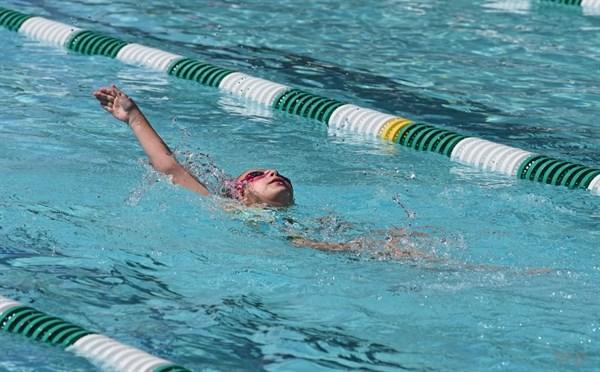
Everyone knows that swimming is very good for people’s health, and many people are keen on swimming now, so in this case, everyone has done some research on swimming. Many people are looking for their favorite postures when swimming in school, but they don’t know much about the specific and separable postures. Here are some specific introductions about swimming.
freestyle
One of the swimming events. In 1896, the first Olympic Games began to be listed as an official event. Freestyle is not limited by any posture, crawl is the fastest, and crawl has become the only posture of freestyle. Crawling is like crawling, that is, paddling with both arms alternately and kicking with both legs alternately. This kind of swimming posture has reasonable structure, small resistance and even speed, and it is the fastest and most labor-saving swimming posture in the world at present.
The basic technical characteristics of freestyle are that the human body is prone in the water, with its head and shoulders slightly higher than the water surface. When swimming in, the trunk rolls around the longitudinal axis of the body appropriately, and the arms take turns paddling to push the body forward. After the hand enters the water, the paddling route is S-shaped, and the breathing and paddling movements are coordinated. When the arm paddles hard, use the water flow to inhale in the valleys formed on both sides of the head.
breaststroke
Breaststroke is an ancient swimming style. According to records, as early as 2000 ~ 4000 years ago, China, Rome and ancient Egypt had similar swimming styles. On August 24th, 1875, the famous swimmer M Webb swam across the English Channel in breaststroke, which lasted for 21 hours and 45 minutes. In the early 19th century, breaststroke was the first position adopted in swimming competitions. However, due to the slow speed of breaststroke, there are fewer and fewer people who swim sideways, crawl and use breaststroke in the competition. It was not until the third Olympic Games in 1904 that breaststroke was separated from other postures.
butterfly stroke
During the period from 1924 to 1936, the biggest innovation of breaststroke was that after the stroke, the arms were no longer moved forward from the water, but the arms were moved from the air but the legs were still clamped by breaststroke, and the deformation of breaststroke-butterfly stroke appeared. In butterfly swimming, the body lies prone in the water, and relies on the powerful strokes of the arms and the wavy strokes of the legs to push the body forward. There is no fixed body posture.
backstroke
One of the swimming events. In 1900, the 2nd Olympic Games began to be listed as an official event. Backstroke includes backstroke and crawl backstroke. Reverse breaststroke is the earliest backstroke, which is similar to breaststroke in action and opposite in body posture. That is, the human body lies on its back on the water, and its arms paddle backwards from the head to the side. In the first few Olympic Games, the backstroke was held in an anti-breaststroke position. When backstroke, the body lies almost horizontally in the water, the chest naturally stretches in line with the abdomen, the head is submerged in the water, and the face is exposed to the water. When swimming in, the head always maintains an upright posture, and the trunk naturally rotates around the longitudinal axis due to the alternate paddling action of the two arms.
How many swimming positions are there in swimming? Different postures in swimming bring different exercises to different parts of people’s bodies, because everyone knows that swimming can exercise all parts of people’s bodies, so swimming is very good for everyone to exercise healthily.
Copyright statement: the picture and text are irrelevant, and this article is reproduced for the purpose of transmitting more information. If the source is marked incorrectly or infringes on your legitimate rights and interests, please contact this website with the ownership certificate, and we will correct and delete it in time. Thank you.